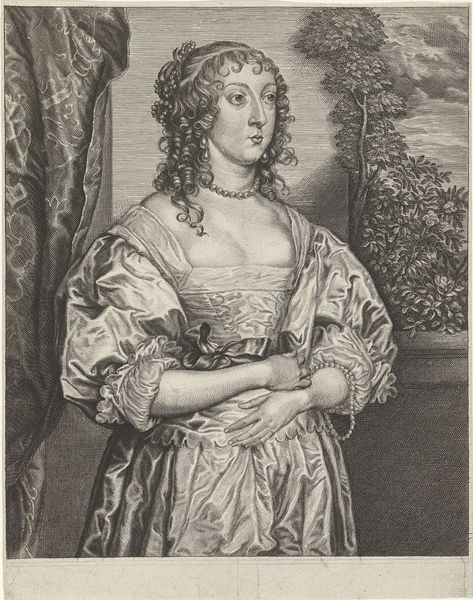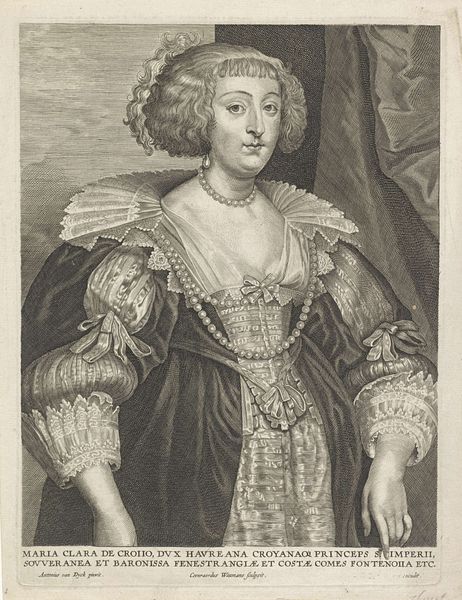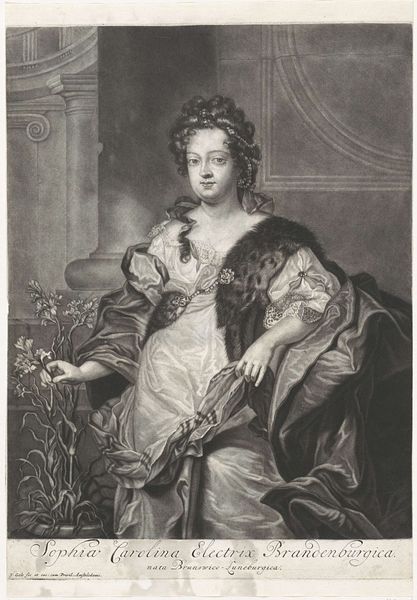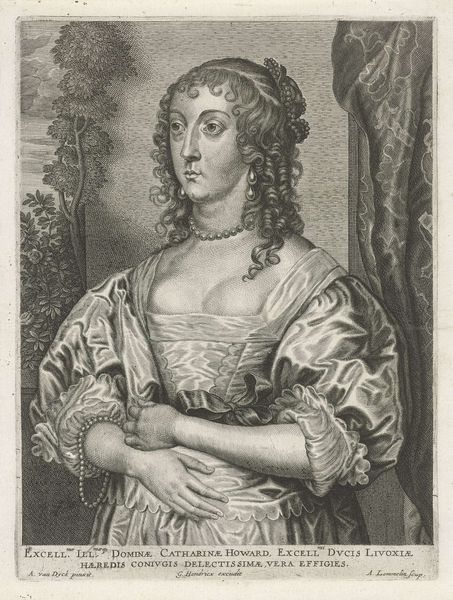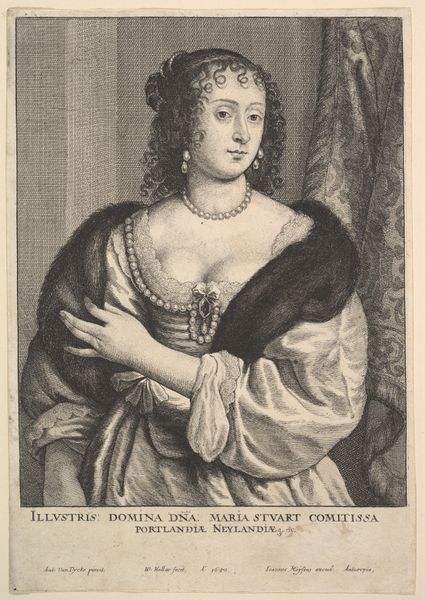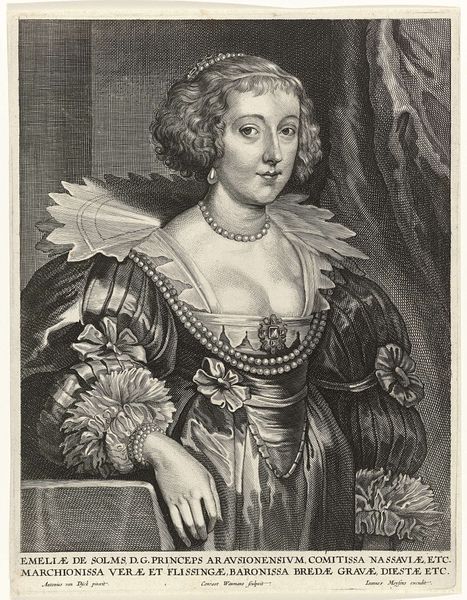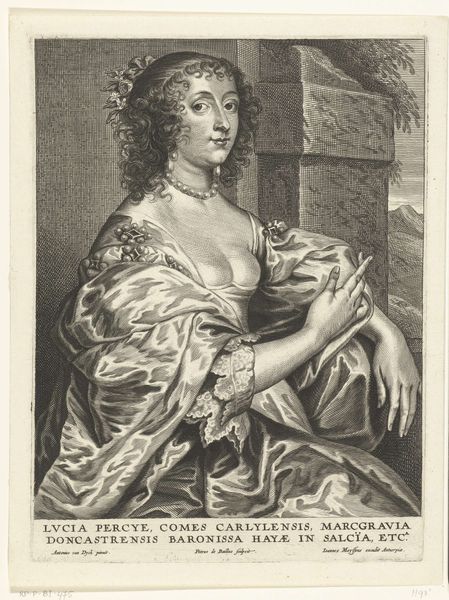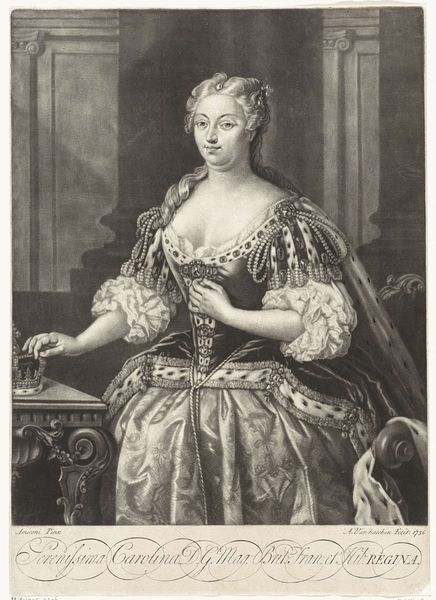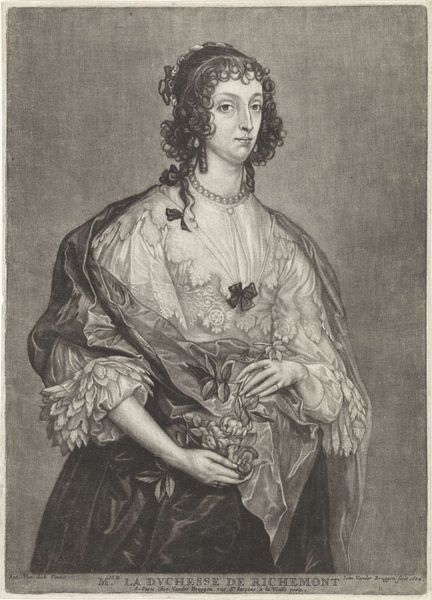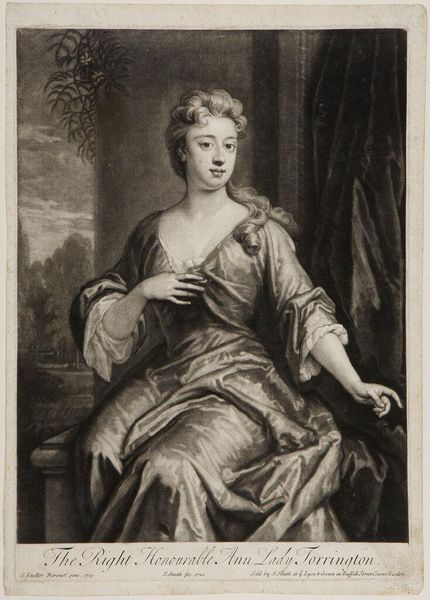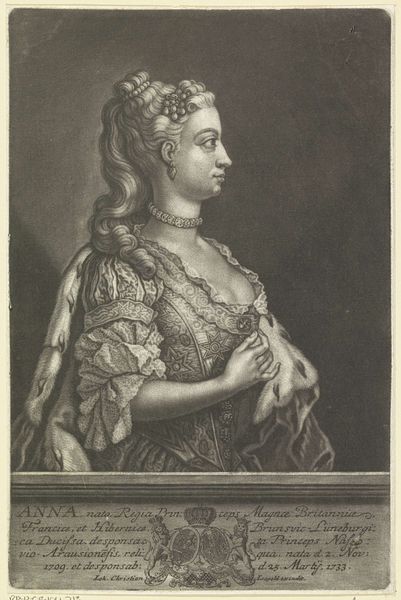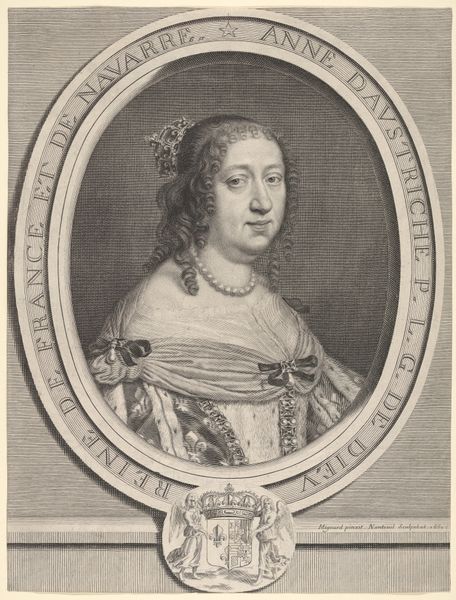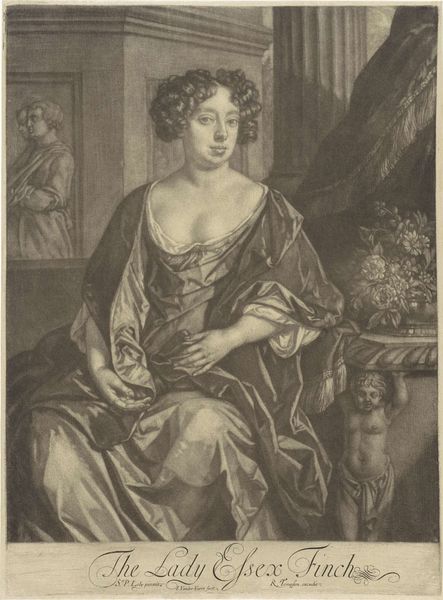
engraving
#
baroque
#
portrait drawing
#
history-painting
#
engraving
Dimensions: height 254 mm, width 199 mm
Copyright: Rijks Museum: Open Domain
Curator: Looking at this work, the engraving "Portret van Beatrix de Cusance", created sometime between 1628 and 1670, presents us with an interesting study in surfaces and social position. Engraved by Pieter de Jode II after a painting by Anthony van Dyck. The craftsmanship is rather impressive. What catches your eye? Editor: Immediately, I sense a formality, a composed restraint. There's something slightly melancholic in her expression. But who was Beatrix de Cusance and why were representations of her circulated? Curator: Beatrix de Cusance, Princess of Cantecroy, lived a rather fascinating life within the convoluted networks of 17th-century European nobility. Examining the details, notice the meticulous rendering of lace, pearls, and the textural differences in the fabric of her gown, suggesting luxury and therefore access and power. This engraving functions as a testament to status. It becomes a collectible item for people of wealth and recognition in a burgeoning market for art and reproductions. Editor: The pearls, yes, scream status but they also represent purity, wealth and even tears, all laden with feminine associations that still resonate today. I'm interested in the symbolic weight of her accessories within the wider European theatre. Her gaze projects not just social status but, also a certain vulnerability. What messages did her pose seek to deliver and to whom? Curator: Indeed! These works served as PR long before we conceptualized social media, reflecting carefully constructed self-image that sought to be durable over time through mass production via prints. It’s noteworthy that an image made by etching a copper plate became a way to perpetuate, to spread, social and political ideologies beyond the aristocracy's closed circles. It allowed consumption by, and indoctrination of the values into, a broader market of buyers. Editor: Ultimately, isn't it remarkable how a carefully constructed image like this transcends mere material concerns and acts as a coded carrier of values, and aspirations for those who consume them over long stretches of history? The visual syntax that has persisted across time gives these artworks agency. Curator: Absolutely. By studying how this engraving was made, circulated, and consumed, we gain insight not only into 17th-century life but also into the mechanics of image-making and its deep ties to economy and the cultural manufacture of personal images as assets. Editor: A poignant insight to guide the imagination when looking upon the representation of Beatrix de Cusance, indeed.
Comments
No comments
Be the first to comment and join the conversation on the ultimate creative platform.
